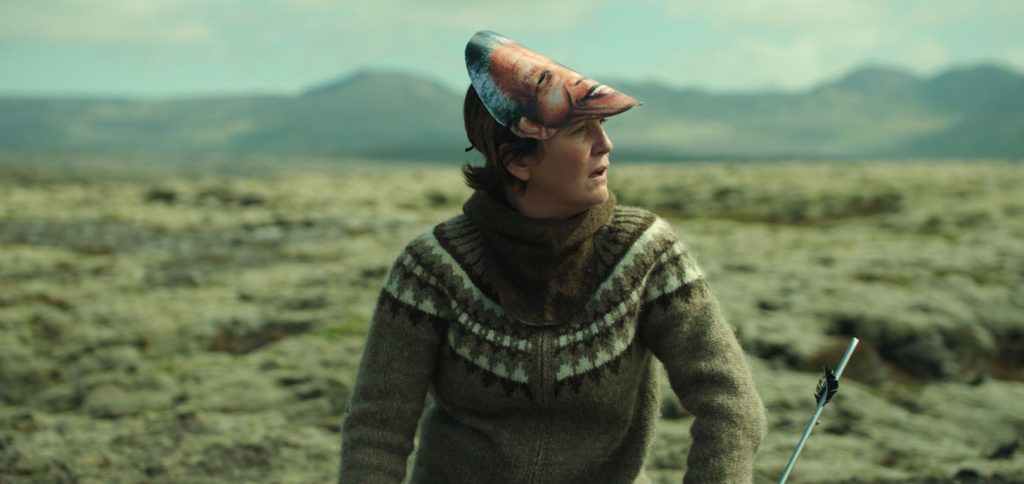I think it’s fair to presume that everyone reading this has, at some point, dreamt about saving the world. We feel like we’re doing our part when we condemn our government’s climate policy on social media, or take part in a weekend rally against racism. But for most of us, that’s as far as we go. After all, saving the world from itself is far from an easy mission. It takes sacrifice, risk, and a little bit of desperation – and even then it seems all but impossible for a single person to make a real impact.
Icelandic director Benedikt Erlingsson’s new film Woman at War is a fable of one woman who is willing to put everything on the line to protect her country from those who would strip it to its bones. Featuring stunning vistas, an innovative style, and a wonderful sense of humour, the movie manages to combine an intelligent perspective on its topics with crowd-pleasing elements that make it a standout in the year so far.
Halla (Halldora Geirharosdottir) is not who you think of when you picture a world warrior. A personable and professional 49 year-old choirmaster, nobody would pick her as the so-called ‘Mountain Woman’ who sabotages power lines and steals plastic explosives in an effort to bring multinational energy companies to their knees. Her efforts are simple but considered, and always fraught with danger.
When a fifth attempt at halting production at a Rio Tinto aluminium plant fails, and the government reconfirms its support for the company, Baldvin (Jörundur Ragnarsson), a government official and member of Halla’s choir, encourages her to stop. The risks are growing to the extent Baldvin checks whether a nearby printer is connected to the internet in case they’re being spied on.
It’s not enough to dissuade Halla, but an unexpected call one afternoon might. The caller informs Halla that adoption laws have changed, and that her request to mother a child from the Ukraine has been accepted. Suddenly, the stakes of her battle have changed. She has someone else’s future to consider. But what should take precedence?

Woman at War explores this question both through Halla’s subsequent actions, and her relationship with her yoga teaching twin sister Ása (also played by Geirharosdottir). Both think they are capable of changing the world, but Halla sees her sister’s path as a selfish one, while Ása is quick to label the Mountain Woman an extremist.
Erlingsson scatters quickly, often humorous elements through the film to ensure it never gets too serious. A scene involving Halla, a ram, and a patrolling helicopter is sure to bring a laugh, as are the numerous arrests of a lost, slightly-dark skinned Spanish tourist (Juan Camillo Roman Estrada) who the authorities constantly blame for Halla’s attacks.
The most interesting of these quirks, however, is the physical presence of a trio of musicians (Davíð Þór Jónsson, Magnús Trygvason Eliasen, Ómar Guðjónsson) and Ukranian singers (Iryna Danyleiko, Galyna Goncharenko, Susanna Karpenko) in key moments throughout the film. At first, Halla seems unaware of them, but as Woman at War continues, they play a greater part in the proceedings. It’s an inspired choice that suits the movie surprisingly well.
The film’s climax is the only moment where the intelligence of Erlingsson and Ólafur Egilsson’s script stumbles, but it works thematically, if not logically. It’s a moment that’s easy to forgive in a story that never feels preachy or unbelievable, especially when it is followed shortly by a stunning final shot from cinematographer Bergsteinn Björgúlfsson’s that puts Halla’s journey in context.
Ultimately, Woman at War is a film that deserves to be seen by a wide audience. There’s plenty for everyone to enjoy here, all backed by an important theme creatively presented by a brilliant cast and crew.
—
Woman at War is in Australian cinemas now.
